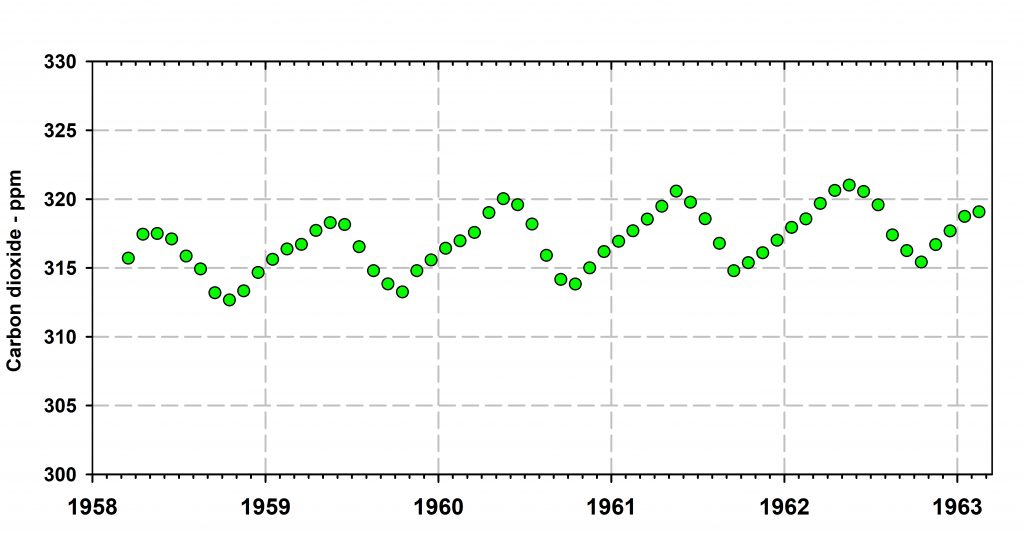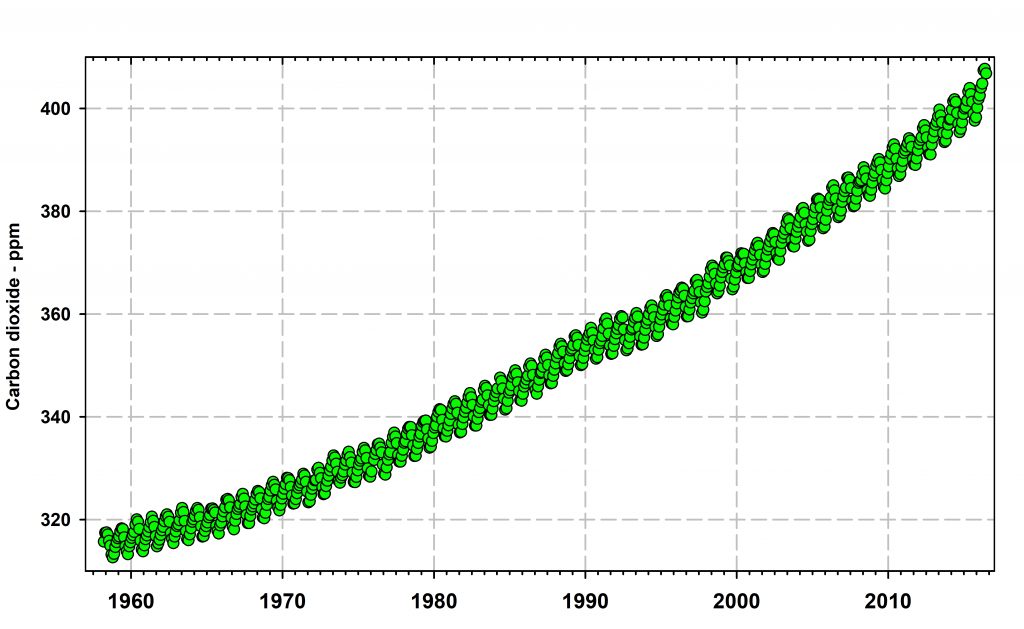I have grown weary of media and news statements that climate change research should be a priority. At the present time military spending, war, and oil and gas companies seem to be the priority spending of many governments. Climate change research seems to be more focused on the physical sciences in attempts to predict what changes in temperature, rainfall, and sea conditions can be expected if we continue at the present global rates of greenhouse gas emissions. This is all very good, and the IPCC reports are excellent. The people are listening and reacting to the bad news even if all the major western governments are close to ignoring the problem. So where does this leave ecological scientists?
Our first response is that we should mimic the climatologists in predicting what the ecological world will be like in 2050 or 2100. But there is a major problem with this centered around the fact that physics has a whole set of fixed laws that will not change in a thousand years, so that the physics of the atmosphere and the oceans is reasonably understood and by the application of the laws of physics, we can arrive at a reasonable prediction that should be constrained by physical laws. Ecological science is nowhere near that paradigm of predictability because it deals with organisms that can evolve and interactions that can change rapidly when an unexpected invasive species arrives on the scene or humans interfere with ecosystem services. Ecological changes are not driven solely by climate change, a fact it is easy to forget. One consequence of this limitation is that we cannot make any kind of reliable predictions about the state of our ecosystems and the state of the Earth’s biodiversity by 2050 or 2100. We can however, in contrast to the physical sciences, do something about ecological changes by finding the limiting factors for the species under concern, protecting these endangered species and setting aside natural areas protected from human depredation. While we can do this to some extent in rich countries, in poor countries, particularly tropical ones, we have a poor record of protecting the exploitation of national parks and reserves. Think Brazil or the Central African Republic.
But given this protection of areas and funding for threatened species, conservation ecologists still have some very difficult problems to face. First and foremost is the conservation of rare, endangered species. It is nearly impossible to study rare species to discover the limiting factors that are pushing them toward extinction. Second, if you have the information on limiting factors, it is difficult to reverse trends that are determined by climate change or by human disrespect for conservation values.
In spite of these problems, the ecological literature is full of papers claiming to solve these issues with various schemes that predict a brighter future sometime. But if we apply the same rigor to these papers as we do to other areas of ecology, we must treat them as a set of hypotheses that make specific predictions, and try to test them. If we have solutions that are feasible but will require 50 years to accomplish, we should be very clear that we are drawing a long bow. Some statement of goals for the next 5 years would be desirable so we can measure progress or lack of progress.
The screams of practitioners go up – we have no time to test hypotheses, we need action! If we have clear-cut a forest site, or bulldozed shrub habitats, we may have a good idea of how to proceed to restoration. But with a long term view, restoration itself in highly contestable. In particular with climate change we have even less ability to predict with knowledge based on the last 50 year or so. So if you are in a predictive mode about conservation issues, have multiple working hypotheses about what to do, rather than one certain view of what will solve the problem.
This is not a cry to give up on conservation, but rather to trim our certainty about future states of ecosystems. Trying to predict what will happen under climate change is important for the Earth but we must always keep in mind the other critical factors affecting biodiversity, from predators to parasites and diseases, and the potential for evolution. Human destruction of habitats is a key issue we do not control well enough, and yet it may be the most important short term threat to conservation.
All of this leads into the fact that to achieve anything we need resources –people and money. The problem at present is where can we get the money? Governments in general place a low value on conservation and the environment in general in the quest for money and economic growth. Rich philanthropists are useful but few, and perhaps too often they have a distorted view of what to invest in. Improving the human condition of the poor is vital; medical research is vital, but if the environment suffers losses as it is at present, we need to balance or reverse our priorities of where to put our money. I do not know how to accomplish this goal. The search for politicians who have even a grade 1 understanding of environmental problems is not going well. Read Boris Johnson and Vladimir Putin. What is being accomplished now is more to the credit of private philanthropy which has clear goals but may pull in diverse directions. I submit that to date we have not been successful in this pursuit of environmental harmony, but it is a goal we must keep pushing for. E.O. Wilson once said that there was more money spent in New York City on a Friday night on beer than was devoted to biodiversity conservation for the entire world for the year. This should hardly be a good epitaph for our century.

